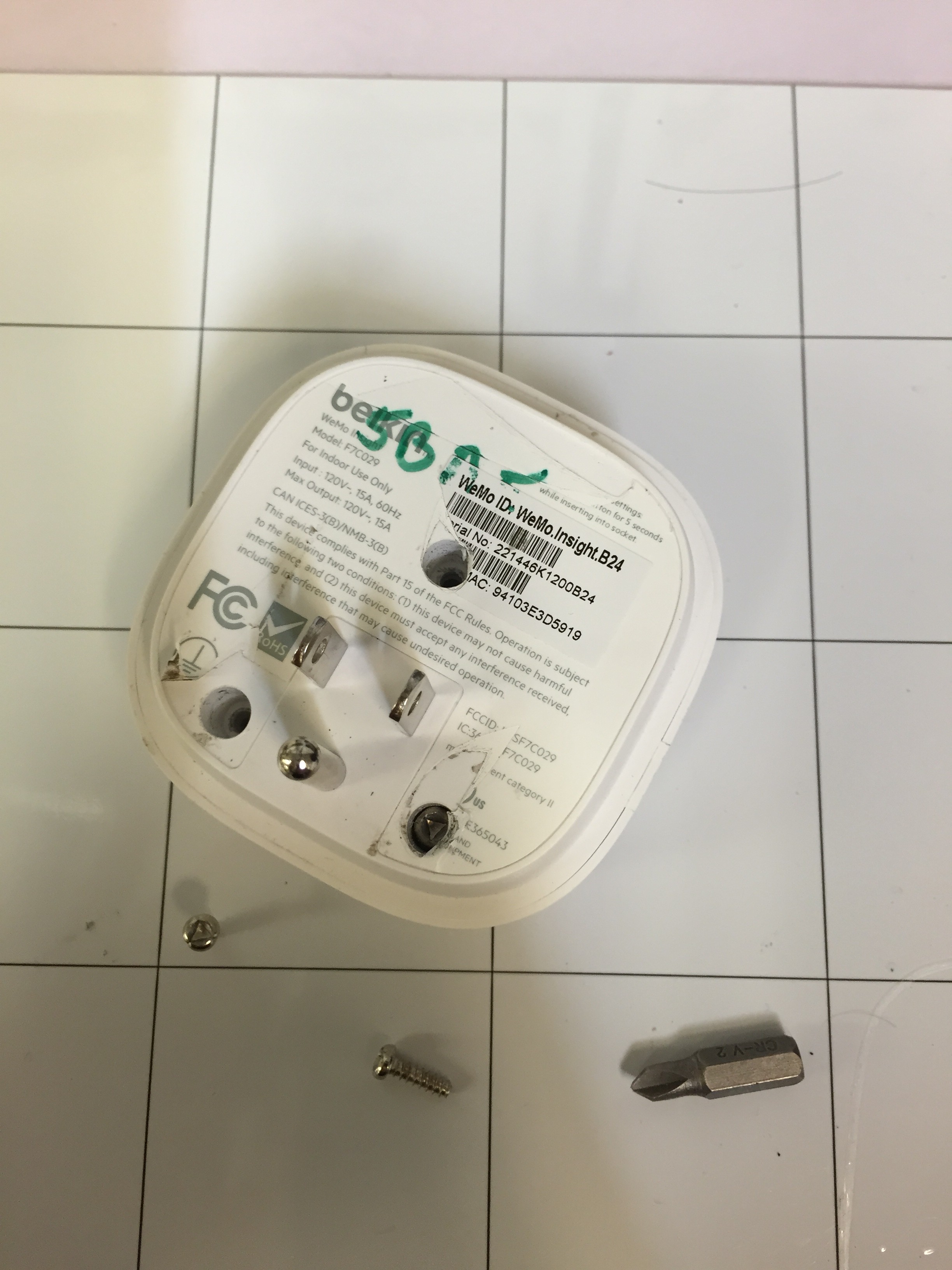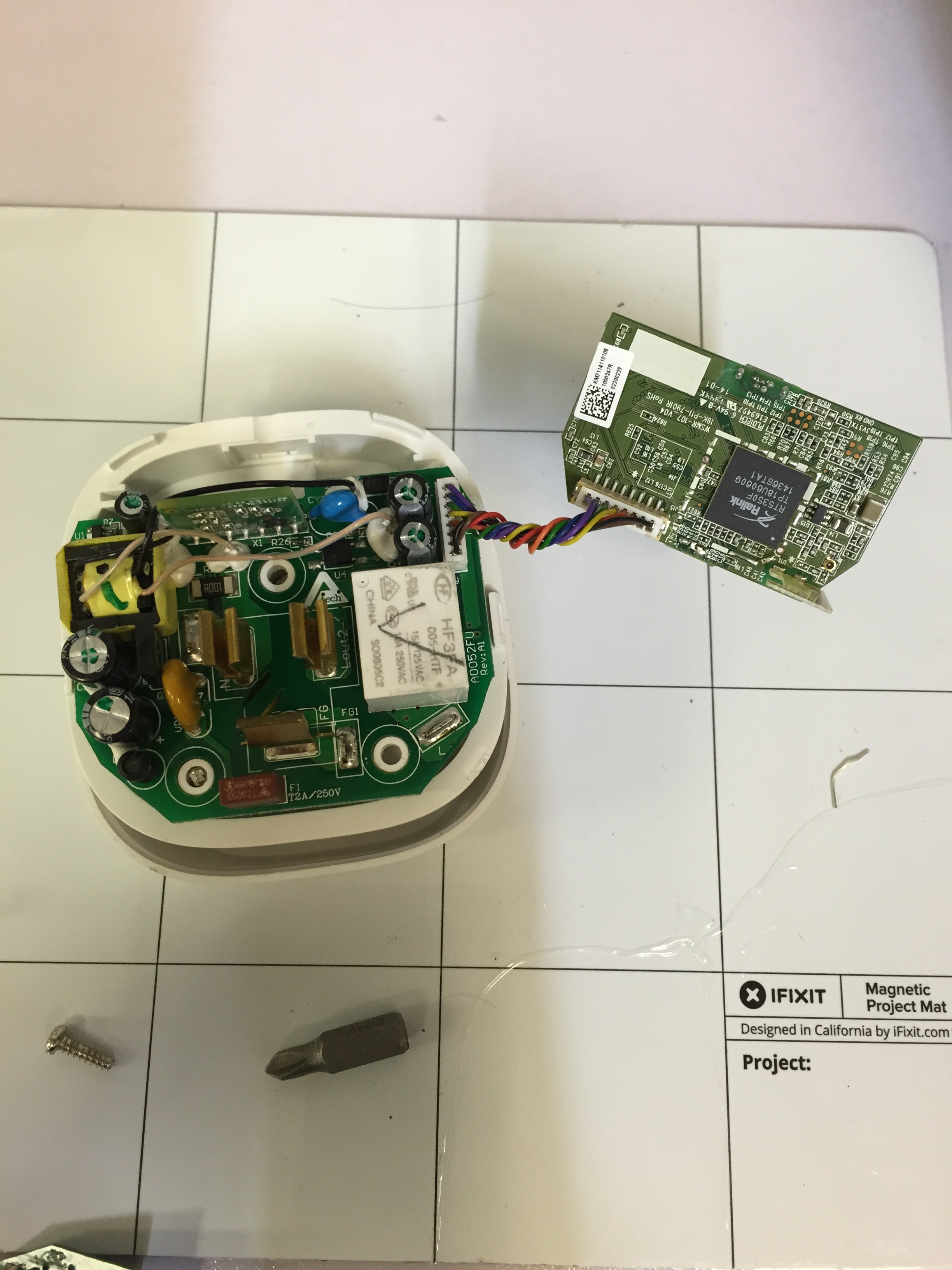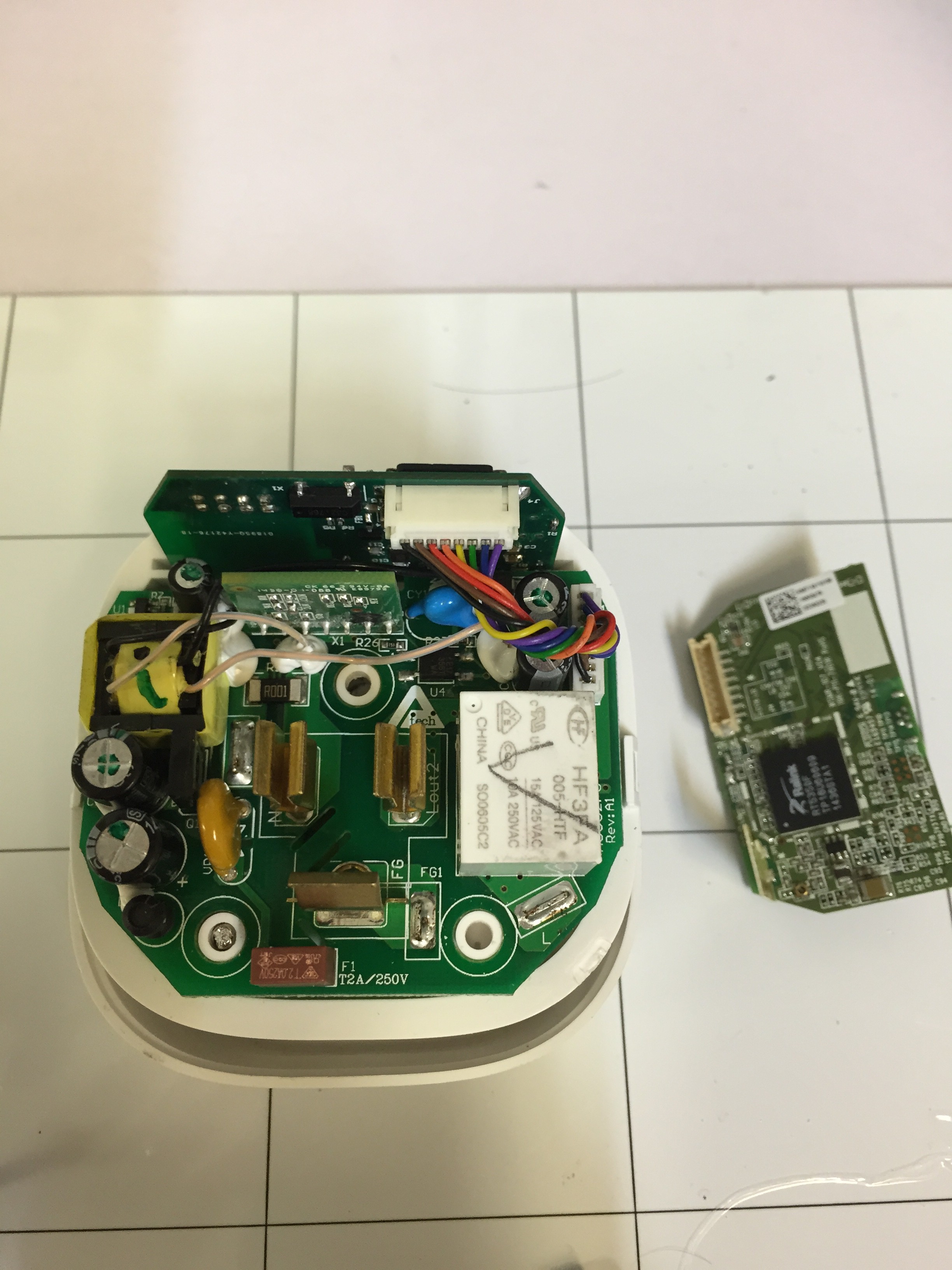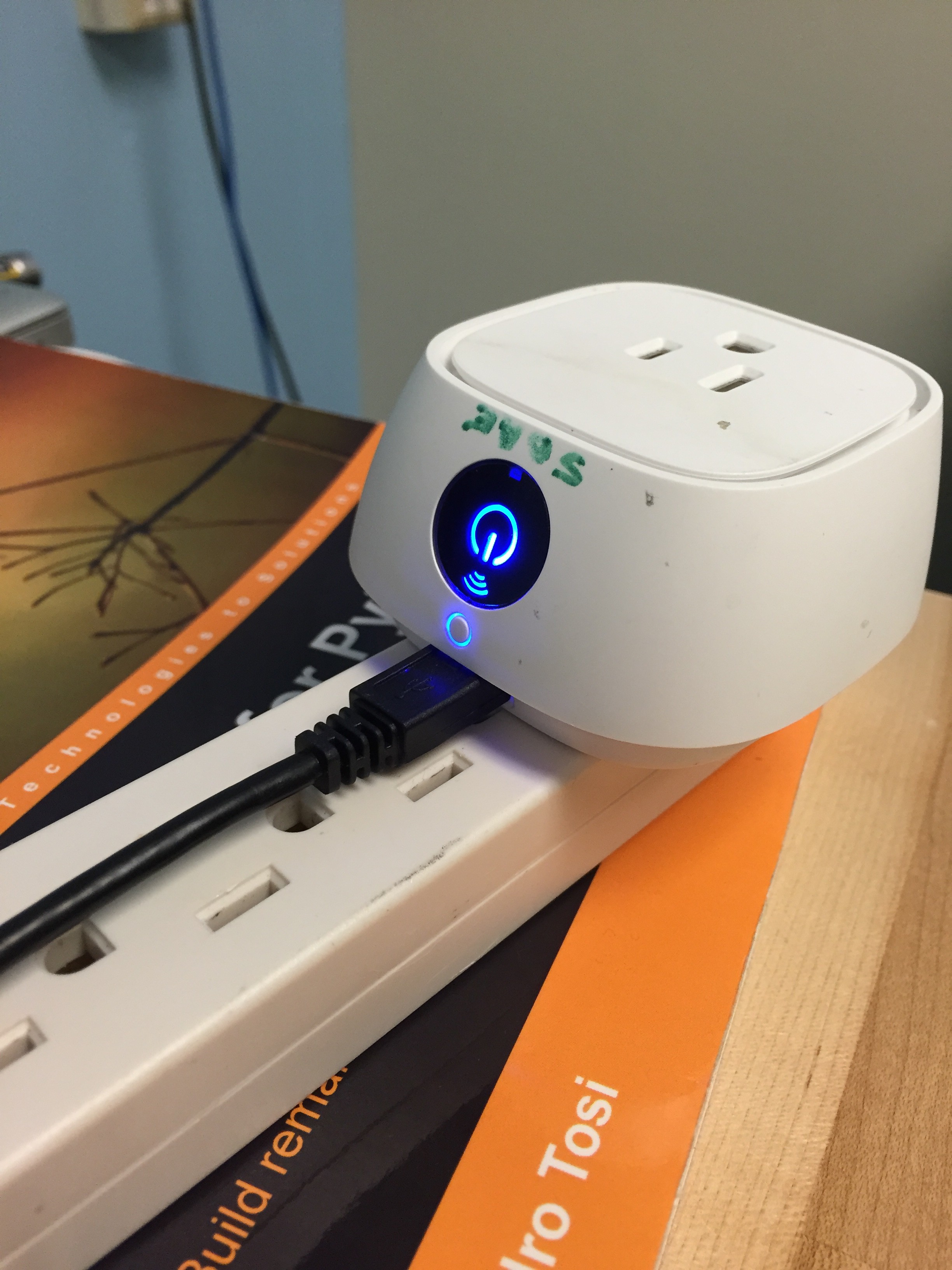-
1Step 1
Remove the 3 screws from the back of the WeMo (R) Insight. They are triangular (argh) so make sure you use the right bit. The screws are hidden under the sticker, just poke through with the screwdriver and they should come right out.
-
2Step 2
Carefully separate the plastic shell to expose the inner PCB's. There are 2 boards, the host board and the control board. The host board just has the high voltage components and relay. All the "smart" for the plug is in the control board.
Lift the control board out and separate it from the connector.
...and of course **NEVER** plug the system in when it is not **FULLY** assembled. -
3Step 3
Now replace the stock control board with SmartEE. Both boards use the same connector pinout so its just a drop in replacement. Carefully reassemble the plug. The SmartEE control board should fit snuggly in the slots of the plastic case.
Put the screws back in and then your upgrade is complete!
-
4Step 4
To initialize the plug with your wireless network SSID and password, plug it in and connect the USB plug to your computer. It should show up as a TTY serial interface (it enumerates as an ACM device). Use your favorite terminal emulator to connect. When you connect over USB the LED should turn blue.
Output below is from this one <built by a friend> .
user$ /terminal.py /dev/tty.usbmodemfa133411 /dev/tty.usbmodemfa133411, 115200 baud ^C to exit ---------- SmartEE WEMO(R) Plug v1.0 [help] for more information > config set wifi_ssid my_network > config set wifi_pwd t0ps3cr3t
Set your wifi_ssid to your network and if the network is password protected configure the wifi_pwd accordingly. Then disconnect the USB and plug the plug in wherever you like!Manage the plug by import plug.py into your own scripts or use demo.py directly:
./demo.py --relay on <plug IP address> ./demo.py --relay off <plug IP address> ./demo.py --read <plug IP address>Plug data is stored in a .CSV file with 8 columns: timestamp, Vrms, Irms, Watts, Average Power, Line Frequency, Power Factor, EnergyFor more details check out the source or view the documentation with
./demo.py -h
This will display some useful information and sample commands
 John
John



Discussions
Become a Hackaday.io Member
Create an account to leave a comment. Already have an account? Log In.